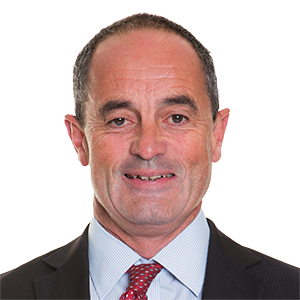Transport, trade and logistics update
Draft National Rail Policy to be welcomed but needs to be implemented
South Africa | Press release | May 2022
The South Africa Minister of Transport has released a draft white paper on national rail policy (NRP). The recognition of the importance of rail in infrastructure and economic development is to be welcomed. The NRP acknowledges rail’s problems in South Africa: the need to deal with legacy technical issues; the need to allow access to the network by private operators; the need for massive government and private investment; and the contribution rail could make to decarbonisation goals. The challenge, as always, with government draft white papers, lies in the implementation and timing. The fact that this draft white paper is dated July 2017 and has only been released five years later is evidence of that concern.
The draft paper can be accessed through the link here. It contains a useful executive summary.
The map on the last page (with tellingly outdated town names) gives an indication of the ambitious nature of this policy. The gap between that ambition and the current reality that only 20 per cent of South Africa’s freight and 10 per cent of its commuters are carried by rail means that the government and private sector are going to have to work closely with international financiers to achieve the goals set out in the policy.
After an analysis of the cause of the current virtual collapse of South Africa’s network and rail operations, the NRP deals broadly with the issues set out below.
In line with the discussions by the African Union, it is recognised that our current narrow gauge railway network both limits speeds and tonnages and hinders the development of unified rail corridors throughout Africa. The proposal is to move to standard gauge other than on existing urban networks.
South Africa’s port levies, which are amongst the highest in the world, have been used to cross-subsidise both passenger and freight rail operations. In line with the long overdue corporatisation of the Port Authority the NRP proposes transferring existing infrastructure to a separate Transnet-owned entity with Transnet Freight Rail (TFR) and the Passenger Rail Association of South Africa (PRASA) continuing to operate freight and passenger services respectively on existing infrastructure. This will allow private third-party operators to compete with TFR and possibly PRASA in running freight and passenger on existing lines.
PRASA, which is already engaged in a modernisation programme, will be encouraged to develop high-speed rail links between the major urban centres of Gauteng, Ethekwini, Gqeberha and Cape Town.
As high-speed trains can run up to 300 kmh, the NRP recommends strengthening the Rail Safety Regulator’s functioning and capacity.
The NRP recognises, as we have been saying for a number of years, that the logistics value chain has changed completely over the last few decades. This requires rail to be integrated properly into other modes of carriage by way of terminals and hubs which facilitate the transition from rail to road and rail to ship.
Gibela Rail Transport Consortium is not mentioned by name in the NRP, but is already ahead of its target of supplying new passenger locomotives to PRASA from its state of the art facility in Gauteng. The NRP does recommend that there is further investment in both operational and construction capacity which will be welcomed by Gibela and other manufacturers of both rolling stock and infrastructure.
The NRP recognises rail’s potential to assist South Africa in achieving its decarbonisation goals. This is because a well-operated rail system produces far less emissions than its main competitor in the form of road transport. A significant investment programme would of course have to take into account alternative fuel sources such as hydrogen, which is better suited to rail than road transport. This is particularly on the heavy large-volume commodity transport routes where the collapse of rail can be seen in the chains of road trucks carrying coal on the N3 corridor. Some economists have suggested that, at present, it would be more financially viable to build a dedicated truck-tolled highway parallel to the N3 than to attempt to carry the coal by rail.
Implementation of the NRP requires the policy to be turned into a plan to be implemented by Parliament which will also then need to pass a suite of legislation. This would allow South Africa to capture the benefits of having an efficient freight and passenger rail network connecting its ports, urban centres and the rest of Africa. The NRP contemplates two years for parliament’s involvement and 10 to 15 years to implement the plan.
Pending the initial steps, private investors, manufacturers and operators are advised to look into the opportunities created by the NRP and place pressure on the Department of Transport to implement these changes as soon as possible.

